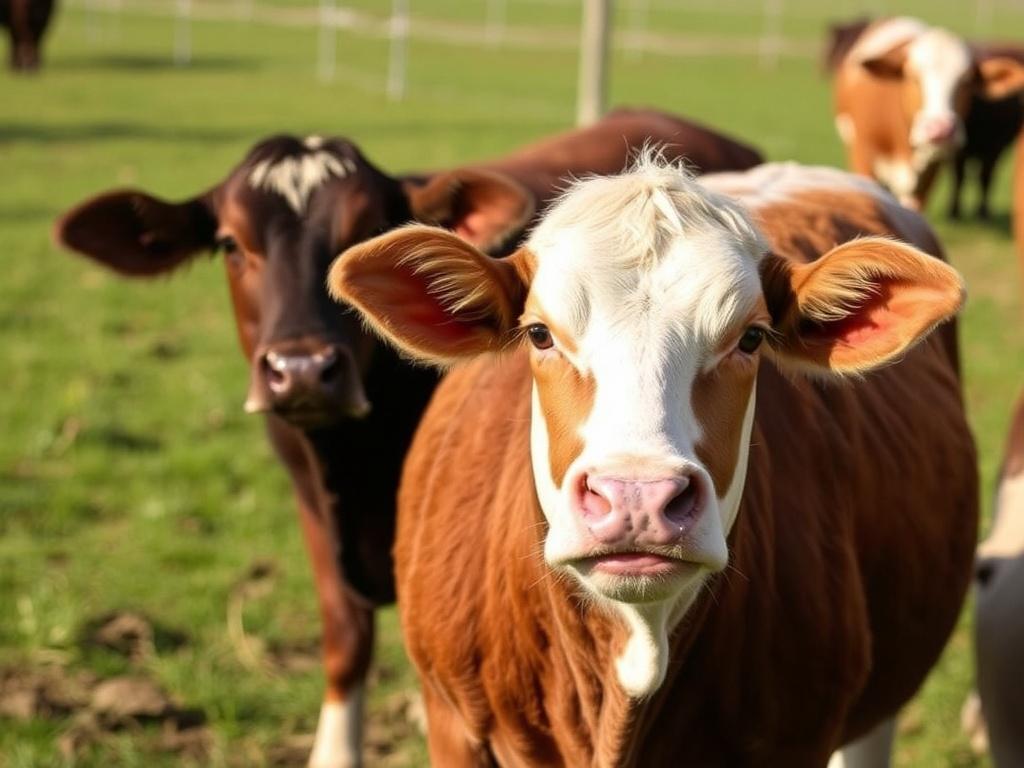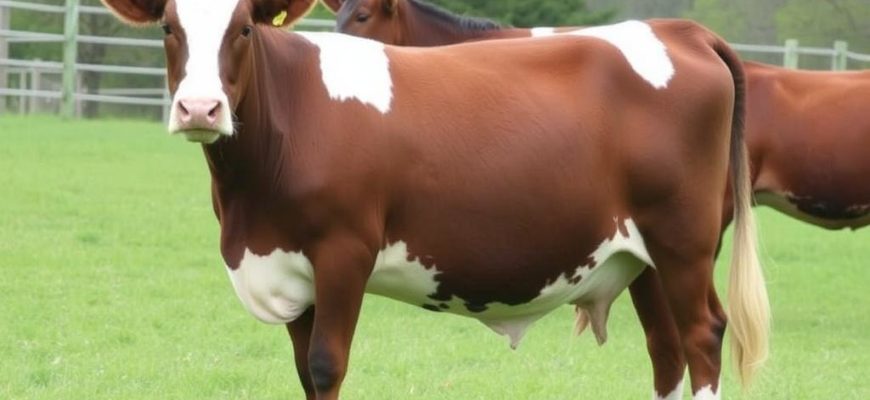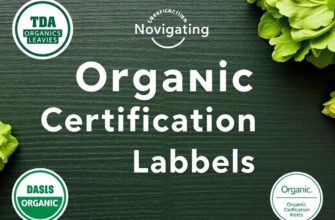Международное название:
Синонимы:
Характеристики:
| Сложность: | |
| Цикл развития: | |
| Световой режим: | |
| Режим полива: | |
| Температура: | |
| Почва: | |
| Ключевая черта: |
Цвет листвы
Цвет бутонов
Размеры цветка
Систематика:
| Домен: | |
| Царство: | |
| Отдел: | |
| Класс: | |
| Порядок: | |
| Семейство: | |
| Род: |
Heritage livestock breeds bring a living connection to agricultural history, offering unique traits, resilient genetics, and a sense of stewardship for biodiversity. If you’ve ever wandered through a county fair and been captivated by a speckled chicken or a deep-bodied pig with a personality, you understand the appeal. But bringing heritage animals onto your land is more than nostalgia; it’s a commitment to thoughtful selection, attentive care, and purposeful breeding. In this guide I’ll walk you through everything from choosing the right breed for your goals to everyday husbandry, health care, and conserving genetic diversity. Think of it as a roadmap for making confident, humane, and sustainable choices for both your animals and your farm.
You don’t need a big operation to work with heritage breeds. Small farms, homesteads, and backyard keepers all play important roles in keeping these animals viable. Whether you want a hardy chicken for eggs and pest control, a pig that thrives on pasture, or a dual-purpose cattle breed for milk and draft work, the principles of selection and care are similar: match the animal to your environment and management style, prioritize health and welfare, and keep records that support long-term genetic well-being. I’ll cover practical steps, real-world examples, and checklists you can use to evaluate breeds and manage them day-to-day.
This article is aimed at newcomers and experienced keepers alike. If you’re just beginning, you’ll find clear starting points and realistic expectations. If you’ve kept animals for years, you’ll find ideas for improving breeding programs, diversifying your herd, and marketing heritage products. Throughout I’ll highlight accessible tools — from lists of useful questions to ask breeders to simple record-keeping formats and basic treatment plans for common problems. Let’s start by defining what we mean by “heritage” and why these breeds matter.
- What Is a Heritage Breed and Why It Matters
- Key Characteristics of Heritage Breeds
- How to Select the Right Heritage Breed for You
- 1. Define Your Goals
- 2. Evaluate Your Land and Climate
- 3. Assess Your Time, Skills, and Infrastructure
- 4. Match Breed Traits to Your Needs
- 5. Consider Genetic Diversity and Registration
- Where to Find Heritage Livestock and How to Evaluate a Breeder
- Sources for Heritage Animals
- Questions to Ask a Breeder
- Quarantine and Biosecurity: The First Days and Weeks
- Quarantine Basics
- Biosecurity Practices
- Housing, Fencing, and Pasture Management
- Shelter Needs
- Fencing and Predator Control
- Pasture Management and Rotational Grazing
- Feeding and Nutrition: Practical Guidelines
- Forage-First Approach
- Supplemental Feeding
- Water and Minerals
- Health Care, Preventative Medicine, and Common Problems
- Routine Health Tasks
- Common Health Issues and Responses
- Breeding and Maintaining Genetic Health
- Breeding Goals and Selection
- Avoiding Inbreeding
- Record-Keeping for Genetic Management
- Record-Keeping and Breed Registration
- What to Record
- Why Register?
- Marketing Heritage Products
- Understanding Your Customer
- Product Differentiation
- Channels and Pricing
- Legal, Ethical, and Welfare Considerations
- Ethical Practices
- Animal Welfare Audits
- Joining the Community: Conservation and Education
- Benefits of Community Involvement
- Practical Starter Plans: Three Real-World Examples
- Starter Plan: Backyard Heritage Chickens (6–12 birds)
- Starter Plan: Small Pasture Pigs (2–6 pigs)
- Starter Plan: Small Flock of Sheep (5–20 sheep)
- Quick Reference: Care Needs by Species
- Top Heritage Breeds Suitable for Beginners
- Chickens
- Pigs
- Sheep
- Goats
- Cattle
- Common Mistakes and How to Avoid Them
- Underestimating Time Commitment
- Overcrowding
- Poor Record-Keeping
- Buying Without Seeing Living Conditions
- Ignoring Long-Term Genetic Health
- Resources and Next Steps
- Conclusion
What Is a Heritage Breed and Why It Matters

Heritage breeds are traditional livestock varieties that were developed over long periods to fit local climates, landscapes, and farming systems. They are not the same as modern commercial breeds, which have often been selectively bred for a single high-output trait like rapid growth or maximum milk volume. Instead, heritage breeds typically offer balanced traits: hardiness, efficient foraging, reproductive longevity, and often distinct flavors or product qualities cherished by niche markets.
Selecting heritage breeds is an act of conservation as well as agriculture. Many heritage populations are at risk due to industrial agriculture’s focus on a handful of highly productive breeds. By choosing heritage stock, keepers help maintain genetic diversity that could be critical for future food security and resilience to disease, climate change, and shifting market demands.
There’s also a cultural and educational value. Heritage breeds carry stories — they reflect the agricultural practices of regions and communities. Keeping them provides a living classroom for children and adults to understand farming traditions and stewardship.
Key Characteristics of Heritage Breeds
Heritage breeds often share several traits:
- Longevity and reproductive soundness over many seasons
- Adaptation to local climates and grazing conditions
- Robust immune systems and good mothering instincts
- Slower growth or lower peak production than industrial breeds, but overall efficiency on low-input systems
- Distinctive appearance and behaviors that reflect their history
These traits influence how you select and care for animals. For example, a heritage hog may not reach market weight as quickly as a commercial hybrid, but it will often convert pasture to meat efficiently and require fewer external inputs.
How to Select the Right Heritage Breed for You
Selecting the right breed is the foundation of success. Make choices that align with your goals, climate, land, skill level, and timeline. Follow this step-by-step approach before making a purchase.
1. Define Your Goals
Start with questions: Are you raising animals for meat, milk, eggs, fiber, conservation, or as pets? Do you want a low-maintenance breed, or are you prepared to invest in daily intensive care? Your goals determine what traits matter most: egg-laying consistency, milk composition, temperament, or the ability to thrive on pasture.
2. Evaluate Your Land and Climate
Different breeds thrive in different settings. Consider rainfall, seasonal temperature extremes, forage quality, and available fencing. Some breeds are heat-tolerant but not cold-hardy, while others handle winters with minimal shelter.
3. Assess Your Time, Skills, and Infrastructure
Heritage breeds can be forgiving, but they still require good management. Ask yourself how much time you can spend on daily care, breeding decisions, record-keeping, and regular health checks. Do you have a quarantine area, veterinary access, and proper fencing?
4. Match Breed Traits to Your Needs
Research breed standards and practical reports. Seek out breeders, breed societies, extension services, and neighbor farmers. Visit farms when possible to see animals in a real setting. Look for traits like foraging ability, mothering, temperament, and disease resistance.
5. Consider Genetic Diversity and Registration
If conservation is a goal, check whether a breed has a registry and how breeders manage pedigrees. Avoid purchasing multiple closely related animals from the same small flock if your aim is to maintain genetic diversity.
Where to Find Heritage Livestock and How to Evaluate a Breeder
Finding good stock matters as much as picking the right breed. Working with reputable breeders reduces the risk of disease, poor genetics, and behavioral issues.
Sources for Heritage Animals
- Breed associations and registries — often list reputable members
- Conservation organizations — may have reintroduction or sale programs
- Local fairs and agricultural shows — see animals in person
- Online classifieds and networks — verify credentials carefully
- Rescue organizations — sometimes heritage animals need rehoming
Questions to Ask a Breeder
- How long have you bred this breed and why?
- Can I see parents and the living conditions?
- Are animals vaccinated, dewormed, or health-checked? Do you provide documentation?
- Do you support buyers after sale, and can you provide references?
- Are animals registered, and do you keep pedigree records?
- Are there any known genetic issues in your line?
- Do you offer a health guarantee or allow a vet check before final sale?
Quarantine and Biosecurity: The First Days and Weeks
ad595e9354a1c8371abce45cc2504142.jpg
Bringing a new animal home is exciting but risky if you skip quarantine. Even apparently healthy animals can carry pathogens that harm your existing flock or herd.
Quarantine Basics
New animals should be kept separate from your existing stock for a minimum of 21 days, though 30 days is safer. During quarantine:
- Observe animals daily for coughing, diarrhea, lameness, or signs of external parasites.
- Restrict the same tools, boots, and clothing used for quarantined animals.
- Have a vet perform a basic health check and recommend appropriate tests (e.g., fecal egg counts, bloodwork).
- Vaccinate only under vet guidance, considering your farm’s disease profile.
Biosecurity Practices
Simple steps dramatically reduce disease risk:
- Limit visitor access and require footbaths or disposable boot covers.
- Separate young animals from older ones when disease threats differ.
- Isolate animals with any symptoms immediately and consult your veterinarian.
- Keep records of movements, purchases, and health plans for traceability.
Housing, Fencing, and Pasture Management
Comfortable, secure housing and well-managed pasture are central to welfare and productivity. Heritage breeds often excel on pasture, but you still need appropriate shelter and fencing.
Shelter Needs
Shelter should protect from wind, rain, heat, and predators. For example:
- Chickens: secure coops with roosts, nesting boxes, and predator-proofing
- Sheep and goats: simple three-sided shelters in pastures; dry bedding for winter
- Pigs: huts with deep bedding and wallows in hot climates for thermoregulation
- Cattle: loafing sheds and access to shade; windbreaks in cold regions
Rotate bedding and clean regularly to prevent parasites and respiratory issues.
Fencing and Predator Control
Choose fencing appropriate to species and predator pressure. Electrified fencing is very effective for pigs and cattle; woven wire works well for sheep and goats when combined with predator deterrents. For chickens, bury fencing to deter diggers and use hardware cloth to protect against raccoons and foxes.
Pasture Management and Rotational Grazing
Rotational grazing improves soil health, forage quality, and parasite control. Move animals in a planned sequence, allowing rested paddocks to regrow. Mixed-species grazing (e.g., sheep with cattle) can reduce parasite burdens because many parasites are species-specific.
Feeding and Nutrition: Practical Guidelines
Diet shapes health, reproduction, and product quality. Heritage breeds often do well on pasture-centered diets but still need nutritional balancing, especially for breeding animals and young stock.
Forage-First Approach
Maximize pasture and browse. Forage is cost-effective and supports natural behaviors. Monitor body condition and supplement when pasture is inadequate, especially in winter.
Supplemental Feeding
Provide species-appropriate supplements:
- Chickens: layer feeds with calcium for laying hens; grit for digestion if on whole grains
- Sheep: protein and energy supplements during late gestation and lactation; mineral blocks (avoid copper toxicity in sheep)
- Pigs: balanced rations or table scraps with attention to protein; pigs need essential amino acids
- Cattle: hay, silage, or grain as needed; mineral programs tuned to local deficiencies
- Goats: high-quality hay and targeted minerals (avoid feeding sheep minerals to goats)
Avoid overfeeding concentrates to breeds adapted to low-input systems; obesity and metabolic problems can follow.
Water and Minerals
Clean, fresh water is essential. Install frost-free waterers in cold climates. Provide mineral supplements tailored to local soil deficiencies — a soil or forage test can guide you. For many species, trace minerals like selenium are critical.
Health Care, Preventative Medicine, and Common Problems

Good management prevents many health issues. Work with a vet familiar with heritage breeds when possible. Build a basic herd/flock health plan covering vaccination, parasite control, hoof care, and routine inspections.
Routine Health Tasks
- Daily observation of behavior and appetite
- Regular hoof trimming for cattle, goats, and sheep
- Parasite monitoring via fecal egg counts and pasture management
- Vaccination programs based on risk and veterinary advice
- Record-keeping of treatments, births, deaths, and production
Common Health Issues and Responses
Below is a quick-reference table of typical problems and straightforward responses:
| Species | Common Problem | Signs | Immediate Action |
|---|---|---|---|
| Chickens | Respiratory infections | Coughing, nasal discharge, reduced egg production | Isolate affected birds, clean coop, consult vet for diagnostics |
| Sheep | Internal parasites (barber pole) | Diarrhea, weight loss, anemia (pale gums) | Fecal test, strategic deworming, rotational grazing |
| Pigs | Iron deficiency in piglets | Pale, lethargic piglets | Administer iron injection early, ensure good colostrum intake |
| Goats | Hoof rot | Lameness, foul odor | Trim hooves, clean, treat with topical antiseptic, isolate |
| Cattle | Pinkeye or mastitis | Eye discharge, swollen udder, decreased milk | Isolate, consult vet for antibiotics or topical care |
Always consult your veterinarian before administering medications. Overuse of anthelmintics leads to resistance; integrate biological and management controls.
Breeding and Maintaining Genetic Health
If you plan to breed heritage animals, do it with genetics in mind. Your breeding practices will determine the future health and viability of your line.
Breeding Goals and Selection
Define clear breeding goals: improve mothering, maintain hardiness, correct conformation issues, or preserve unique traits. Avoid selecting solely for size or production if it compromises health or temperament.
Avoiding Inbreeding
Keep mating records and avoid pairing close relatives. If you have a small herd, consider:
- Purchasing unrelated breeding stock periodically
- Exchanging sires with trusted breeders
- Using frozen semen or embryos when available to introduce new genetics
Effective population size matters: even a small number of unrelated individuals will help maintain diversity.
Record-Keeping for Genetic Management
Document births, sire and dam, health events, production data, and reasons for culling. Over time these records inform selection decisions and help identify heritable problems early.
Record-Keeping and Breed Registration
Good records are the backbone of a sustainable herd. Registries often improve marketability and ensure the breed’s history is preserved.
What to Record
- Pedigrees and registration numbers
- Birth dates, weights, and growth rates
- Vaccinations, dewormings, and vet visits
- Breeding dates, outcomes, and any assistance required
- Production data: eggs, milk yields, fiber quality
Digital spreadsheets or simple herd-management apps work well. Back up your records.
Why Register?
Registration supports breed conservation, verifies lineage for buyers, and helps breed societies monitor population trends. If you’re breeding for market or preservation, registration is often essential.
Marketing Heritage Products
Heritage breeds often command premium prices for meat, eggs, milk, or fiber due to perceived superior flavor, ethical production, and conservation value. But marketing requires a strategy.
Understanding Your Customer
Identify buyers who value provenance: chefs, farmers’ markets shoppers, local food CSAs, and heritage breed enthusiasts. Tell the story of the breed and your farm practices — consumers pay for transparency.
Product Differentiation
Highlight unique selling points:
- Pasture-raised, humane handling
- Flavor profiles and cooking tips
- Limited availability and traceable origin
- Certificates of breed authenticity or registry info
Channels and Pricing
Direct sales to consumers and chefs often yield higher returns than wholesale. Offer value-added options like portioned cuts, smoked products, or farm-fed bundles. Build relationships with local restaurants who appreciate heritage quality.
Legal, Ethical, and Welfare Considerations
Compliance with local laws and high welfare standards protect your animals and your business. Check local regulations regarding slaughter, sales, fencing laws, and zoning.
Ethical Practices
Prioritize humane handling, minimize stress during transport, and avoid overbreeding. Engage in culling practices that are respectful and in accordance with veterinary guidance.
Animal Welfare Audits
Consider third-party audits or certifications to demonstrate welfare standards for buyers. Even simple photographic documentation and transparent protocols build trust.
Joining the Community: Conservation and Education
Working with heritage breeds is more rewarding if you connect with others. Breed societies, online forums, and local agricultural groups offer support, knowledge exchange, and sometimes shared breeding programs.
Benefits of Community Involvement
- Access to genetics and breeding support
- Opportunities for cooperative marketing and fairs
- Educational outreach, from classroom visits to workshops
- Collective action for conservation status and funding
Practical Starter Plans: Three Real-World Examples
Below are sample starter plans to guide decision-making for three common heritage livestock scenarios. Treat these as templates you’ll adapt to your farm.
Starter Plan: Backyard Heritage Chickens (6–12 birds)
Description: Dual-purpose heritage chickens for eggs and garden pest control.
- Space: 4–6 sq ft per bird in coop; access to a secure run
- Feed: Layer ration plus free-range foraging; grit and oyster shell
- Housing: Predator-proof coop with nesting boxes and roosts
- Breeds for beginners: Wyandotte, Rhode Island Red, Sussex
- Vet care: Basic biosecurity, vaccination depending on risk
- Record-keeping: Egg counts, hatch dates if breeding
Starter Plan: Small Pasture Pigs (2–6 pigs)
Description: Pastured heritage hogs for meat and pasture improvement.
- Space: 20–30 sq ft per pig in pens, rotational paddocks for grazing
- Feed: Forage-forward diet with supplemental balanced ration during finishing
- Housing: Weatherproof huts and shade; secure electrified fence
- Breeds for beginners: Gloucestershire Old Spot, Large Black, Tamworth
- Vet care: Iron for piglets, parasite control, reproductive management
- Record-keeping: Weight gain, breeding records, pasture rotation schedule
Starter Plan: Small Flock of Sheep (5–20 sheep)
Description: Heritage sheep for meat, fiber, and pasture management.
- Space: 10–20 sheep per acre depending on forage quality
- Feed: Pasture plus supplemental hay in winter; mineral block
- Housing: Simple shelter and lambing pens; predator protection
- Breeds for beginners: Katahdin (hair sheep), Shetland (fiber), Dorset (meat)
- Vet care: Strategic deworming, foot-trimming, vaccination where needed
- Record-keeping: Lambing records, wool harvests, pedigrees
Quick Reference: Care Needs by Species
| Species | Space per Animal | Key Feed Requirement | Shelter Needs | Special Notes |
|---|---|---|---|---|
| Chicken (heritage) | 4–6 sq ft coop; 10 sq ft run | Layer feed, grit, calcium | Predator-proof coop, nesting | Rotate runs to reduce parasites |
| Sheep | 0.5–2 acres per 5 sheep | Pasture and quality hay | Three-sided shelter, lambing pen | Avoid copper supplements |
| Pigs | 20–30 sq ft pen; rotational paddocks | Forage with balanced concentrate | Huts, shade, wallows in hot climates | Strong fencing needed |
| Goats | 0.1–1 acre per goat depending on browse | Browse, quality hay, selective minerals | Dry sheltered area, secure fencing | Susceptible to internal parasites |
| Cattle | 1–3 acres per cow | Pasture, hay, mineral program | Loafing sheds, shade, windbreak | Plan for calving and feeds for lactation |
Top Heritage Breeds Suitable for Beginners
Choosing beginner-friendly breeds reduces management difficulty and increases enjoyment. Here are a few respected options by species:
Chickens
- Rhode Island Red — hardy, good layers, calm
- Wyandotte — cold-tolerant, dual-purpose
- Plymouth Rock — friendly and reliable
Pigs
- Tamworth — hardy, good foragers
- Large Black — docile and pasture-adapted
- Gloucestershire Old Spot — maternal and easy to manage
Sheep
- Dorset — good mothering and manageable lambing
- Katahdin — parasite-resistant, no-shear hair sheep
- Shetland — excellent for small flocks and fiber
Goats
- Nubian — friendly and dual-purpose for milk
- Kiko — hardy and low-input
- Pygmy — small, friendly, great for beginners
Cattle
- Dexter — small, easy to handle for homesteads
- Devon (Red) — hardy and good on pasture
- Highland — excellent cold tolerance and hardiness
Common Mistakes and How to Avoid Them
Even experienced keepers make errors. Here are common pitfalls and how to steer clear.
Underestimating Time Commitment
Animals need daily observation and seasonal chores. Build time into your schedule and consider pet sitters or cooperative arrangements for vacations.
Overcrowding
Too many animals on limited acreage leads to parasite problems and poor body condition. Start small and expand responsibly.
Poor Record-Keeping
Records help with breeding, health decisions, and marketing. Even simple logs of births and illnesses pay off.
Buying Without Seeing Living Conditions
Animals reflect their environment. Visit breeders, inspect housing, and ask about disease history.
Ignoring Long-Term Genetic Health
Short-term gains from inbreeding or using a popular sire can harm a population’s future. Prioritize diversity and thoughtful selection.
Resources and Next Steps
Ready to dive in? Start by contacting breed societies, attending a local fair, or visiting a conservation farm. Many universities and extension services offer workshops on small-scale livestock management. Keep a notebook, create a farm plan, and build a relationship with a veterinarian experienced in herd health.
Suggested first steps:
- Define your goals and farm constraints in a one-page plan
- Attend a local agricultural fair and speak with breeders
- Create a basic quarantine and biosecurity checklist
- Set up simple record-keeping (spreadsheet or notebook)
- Buy modestly — start with a few animals and expand as you learn
Conclusion
Selecting and caring for heritage livestock breeds is a rewarding journey that blends practical husbandry with conservation and cultural stewardship. By matching breeds to your land and goals, working with reputable breeders, practicing good biosecurity, and keeping careful records, you can nurture healthy animals while contributing to the preservation of valuable genetics. Start small, learn continuously, and connect with the community — your choices will help keep these breeds thriving for generations to come.
Оценивайте статью, делитесь материалом с друзьями в социальных сетях, а также высказывайте свое мнение в обсуждении ниже! ![]()







